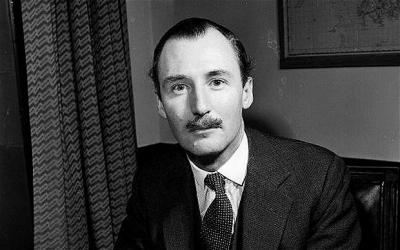Nigel Ivan Forbes, 22nd Lord Forbes 1918-2013

Nigel Ivan Forbes, 22nd Lord of Forbes, KBE, JP, DL
Chief of Clan Forbes
(19 February 1918- 5 March 2013)
Nigel Ivan Forbes, 22nd Lord of Forbes and Chief of Clan Forbes, has died aged 95. A distinguished parliamentarian and businessman, Forbes was premier baron of Scotland and possibly the last surviving member of Scotland’s Representative Peers. Forbes had a deep love of the Aberdeenshire countryside, and a lifelong interest in photography which led to two portraits of himself forming part of the photographic collection of the National Portrait Gallery in London.
Forbes served in the Second World War in the Grenadier Guards, however a mortar shattered his leg during the retreat from Dunkirk in 1940. After recovering from his injuries he served as an adjutant, eventually becoming military assistant to the High Commissioner in Palestine and retiring from the army with the rank of Major. Upon the death of his father 1953, Forbes retired from military life to concentrate on his estates and local political life in Aberdeenshire. In 1955 he was elected to the House of Lords, and three years later was summoned by Harold Macmillan’s conservative government and offered the post of Minister of State at the Scottish Office. He spoke about Scottish Education and Home Affairs in the upper house, spending most of his time on the Deer (Scotland) Bill, which imposed stiffer penalties for poaching. Outside of politics Forbes was a Director of Grampian Television during the 60s, and Deputy Chairman of Tennent Caledonian Breweries from 1964-1974.
Born in 1918, Forbes’ impressive political lineage can be traced back to the beginnings of Clan Forbes, when in 1217 Duncan de Forbes obtained a charter from Alexander III, confirming his claim. In 1444 George I made Alexander Forbes (the chief at the time) Lord, and to this day the Lordship remains Scotland’s premier. The Forbes Clan also have a history of conflict with their nearest neighbours, Clan Gordon. It took two Acts of Parliament and a move by King James VI to force the factions to lay down their arms. During the Jacobite Risings the Clan Forbes and their chief supported the British government. The Jacobites laid siege to the chief’s historic seat of Culloden House in both the 1715 and 1745 risings.
Representative peers were introduced in 1707 when England and Scotland were united into the Kingdom of Great Britain. Fearing a House of Lords swamped with Scottish peers, the English peers restricted the amount by allowing only 16 Scots peers to be elected to the House. Although Forbes inherited his peerage from his father upon his death in 1953, he did not join the House of Lords until the general election in May 1955. When the peerage restrictions were abolished in 1963, Forbes became a member of the House in his own right.
In his maiden speech in the House of Lords he courageously took on the issue of the necessity for a road bridge over the Firth of Forth. In those days, this was a touchy subject, perceived as a somewhat romantic issue championed by the likes of historical novelist Nigel Tranter and the tiny Scottish National Party. Nevertheless, a completed bridge was opened eight years later.
Upon succeeding his peerage Forbes chose not to inhabit the family seat of Castle Forbes (built in 1815), instead living on the south side of the River Don while managing the 5,000-acre family estate. In 1972 the castle was converted into a private hotel, and later Forbes’ younger son moved back in to what is now a private guesthouse.
Forbes married the Hon Rosemary Katharine Hamilton-Russell, the eldest daughter of 9th Viscount Boyne, with whom he later had two sons and a daughter. He is succeeded as the 23rd Lord Forbes by his eldest son, the Master of Forbes, Malcolm Nigel Forbes, born in 1946.


 Margaret Moffet and Lord Sempill like this.
Margaret Moffet and Lord Sempill like this.